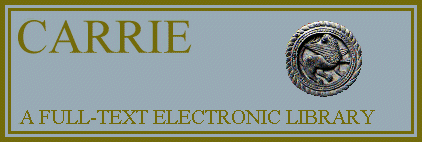On Sunday the 2nd of September 2012, Lynn H. Nelson, an American Digital History Pioneer passed away.
“I more or less stumbled into computer telecommunications in 1989,” he wrote telling us about his curiosity for the new digital humanities discipline, “rather late in life, but, led by Thomas Zielke, of the University of Oldenburg and list owner of HISTORY@FINNHUTC, and encouraged by Herb Harris, Director of Networking at the Academic Computing Center of the University of Kansas, I soon found myself spending all of my “spare” time attempting to aid in the development of online History facilities.”
…The WWW VL History Central Catalogue — History Network after 1998 — he created, became a very active chapter of the more global WWW VL, the “book and globe logo” project portal to the web started by Tim Berners-Lee, the inventor of the WWW in 1991.
In 1998, the web was very young and it was still possible to imagine that a history network could have been monitored by a team of volunteers that Lynn coordinated. The Wikipedia concept — appeared for the first time in 2001 — was already the raison d’être of Lynn’s own Virtual Library project. “Maintainers” around the world were sharing openly with a worldwide community of users their knowledge of what was available in national, regional, local history web sites. They used the index Lynn had developed and the organized hyperlinked structure of Berners-Lee’s World Wide Web Virtual Library built in 1991. The Virtual Library recognizable everywhere thanks to its very personalized logo, is not belonging to any specific place but is ubiquitous and accessible from everywhere with a computer and an internet connection.
Lynn was there when the digital revolution happened. He was a mentor in the field of transnational digital history and humanities computing. In 1998, he wrote an essay for a monographic issue of the Italian contemporary history journal Memoria e Ricerca, about the origins of the history web and the many projects he created or took part to in the early ’90,sometimes even before the birth of the world wide web. So, for the special issue on Linguaggi e Siti, la storia online, (Languages and sites: history online) I was editing between 1998 and 1999 including essays of North American and European history web pioneers, he wrote an essay — available online also in an Italian translation — called Prima del Web: gli sviluppi della storia on line(Before the web: the developments of history online
The Center for History and New Media at George Mason University has kept online Lynn’s original together with other materials and essays accompanying the online version of the outstanding book dealing with the origin of “digital history” as a discipline written by Daniel Cohen and Roy Rosenzweig: Digital History: A Guide to Gathering, Preserving, and Presenting the Past on the Web (University of Pennsylvania Press, 2005). Lynn’s essay was telling about the accomplishments of a group of pioneers digital historians from their gathering on HISTORY@FINHUTC, the first Internet discussion list for historians — see Perspectives Newsletter of the American Historical Association, February 1991– to the development of a world-wide network of History-oriented information servers in 1993. This adventure started before the release of the Mosaic browser in August of 1993. “Historians, wrote Lynn in his abstract, had already been working on the Internet for several years to create facilities and assemble materials for the use of other historians generally. Although people were fascinated by the wealth of materials available when the World Wide Web was opened, few asked who had prepared these materials and so the work of these men and women is in danger of being forgotten.” In an addendum to this essay, he said also about himself and recounted some of his own experiences during this period of growth of the Internet and especially the BITNET project he directed he coordinated at the University of Kansas. (Email di Lynn H. Nelson, [lhnelson@raven.cc.ukans.edu], 29 of October 1998 to Serge Noiret).
In this same essay, Lynn describes also the Kansas history online project which anticipated the creation of a Digital Public History field. The Heritage Group at the University of Kansas: http://www.ukans.edu/heritage/),the Kansas History Gateway, established by Lynn H. Nelson within the History Network Source (HNSource) on March 6, 1993, was the second WWW public web site in the USA; the first Kansas history online website. It can be still viewed through the Internet Archive Wayback Machine for the versions post 1996 and until December 2004. The Kansas history portal is still online today thanks to the friendly collaboration and the accurate management by another Kansas digital history pioneer, George Laughead from Dodge City, one of the closest collaborator of Lynn and the maintainer of the most complete and organized collection of historical web sites belonging to the History Central Catalogue, the WWW VL American History catalogue.
But at the same time Michael Hart’s Project Gutenberg was collecting all kind of digitised version of texts with the idea that “Electronic Texts (Etexts) … were to be made available in the simplest, easiest to use forms available” but were not easily distributed in that format yet, Lynn was convinced that scholarship should have been freely accessible through the Internet for everybody to read through all different hardware and software systems thanks to the Lynx browser: less developed areas of the world would have benefited of this virtual knowledge. So Lynn created one of the first Open Access Digital Library worldwide asking in Kansas and elsewhere through his own transnational network of convinced “geeks”, for Ph.D. thesis, books, essays, syllabi that could have been entered bites by bites using a FTP connection into his Virtual Library of E-books that he called CARRIE.

